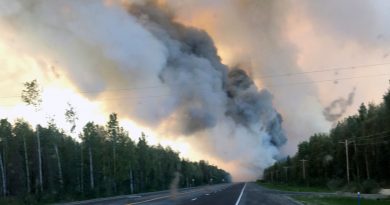Alaska communities worry about military drill’s environmental impacts
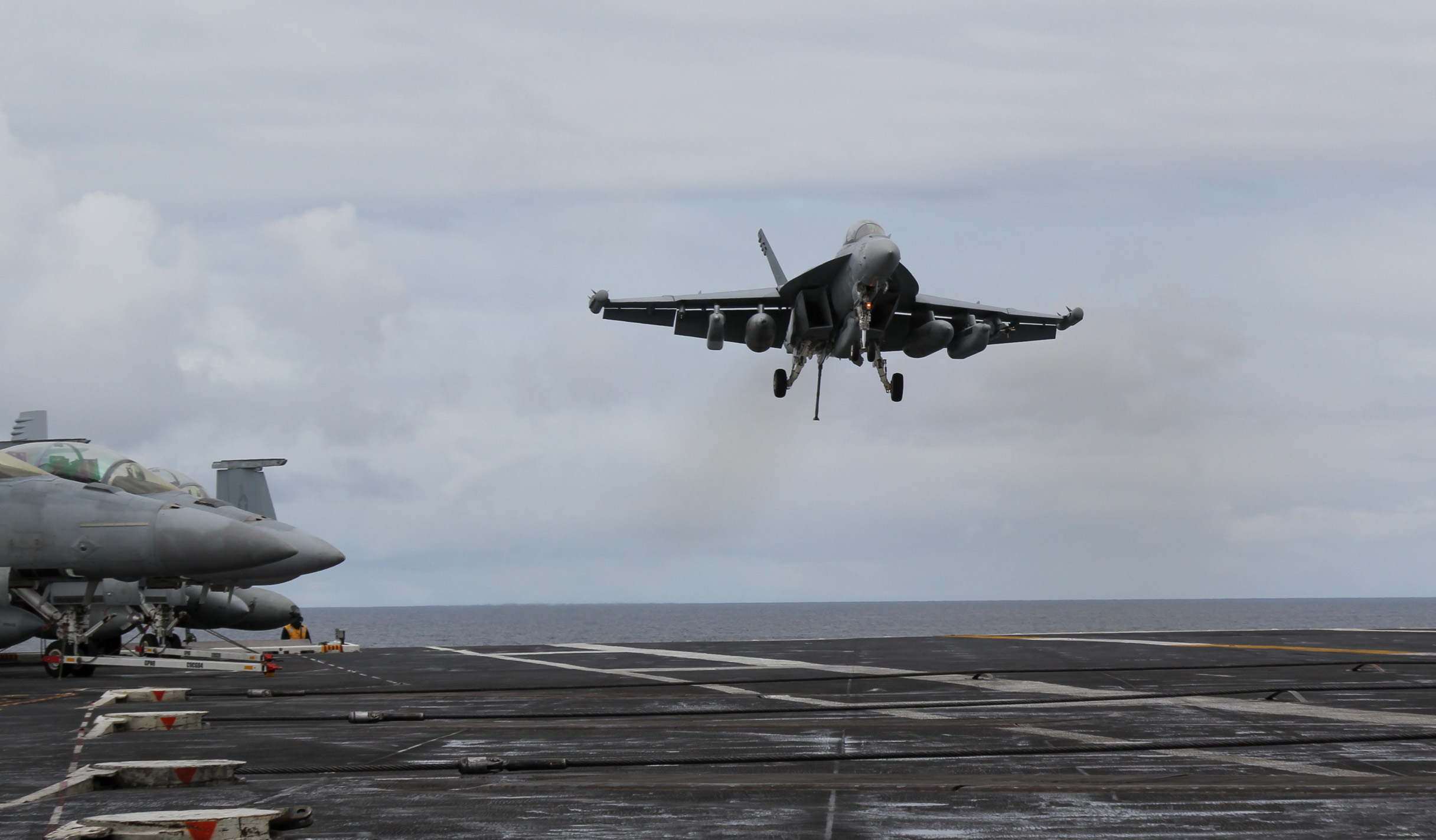
The Northern Edge military exercises are underway across huge sections of Southcentral and Interior Alaska. The Navy has a larger presence than in recent years, part of the branch’s increasing focus on the Arctic.
A persistent complaint in several of Alaska’s coastal communities centers on the environmental impacts of so much activity at a time of year when large numbers of animals are migrating and commercial fishing is beginning. In spite of the military’s outreach efforts, those criticisms remain.
During a recent day of training, fighter jets took off and landed on the deck of an aircraft carrier at a rapid clip.
“We are catching anywhere from six to 25 aircraft on this recovery,” crackled a voice over a speaker system.
To land on the short, floating runway, Navy F-18 Super Hornets drop out of the sky with a hook dangling down to snag a wire on the flight deck. They go from full speed to a full stop in 183 feet. The sight is less like a car suddenly braking, and more like a roller coaster slamming still with an unnatural jolt.
The rumbling from each take off rattles all the way up the observation deck.
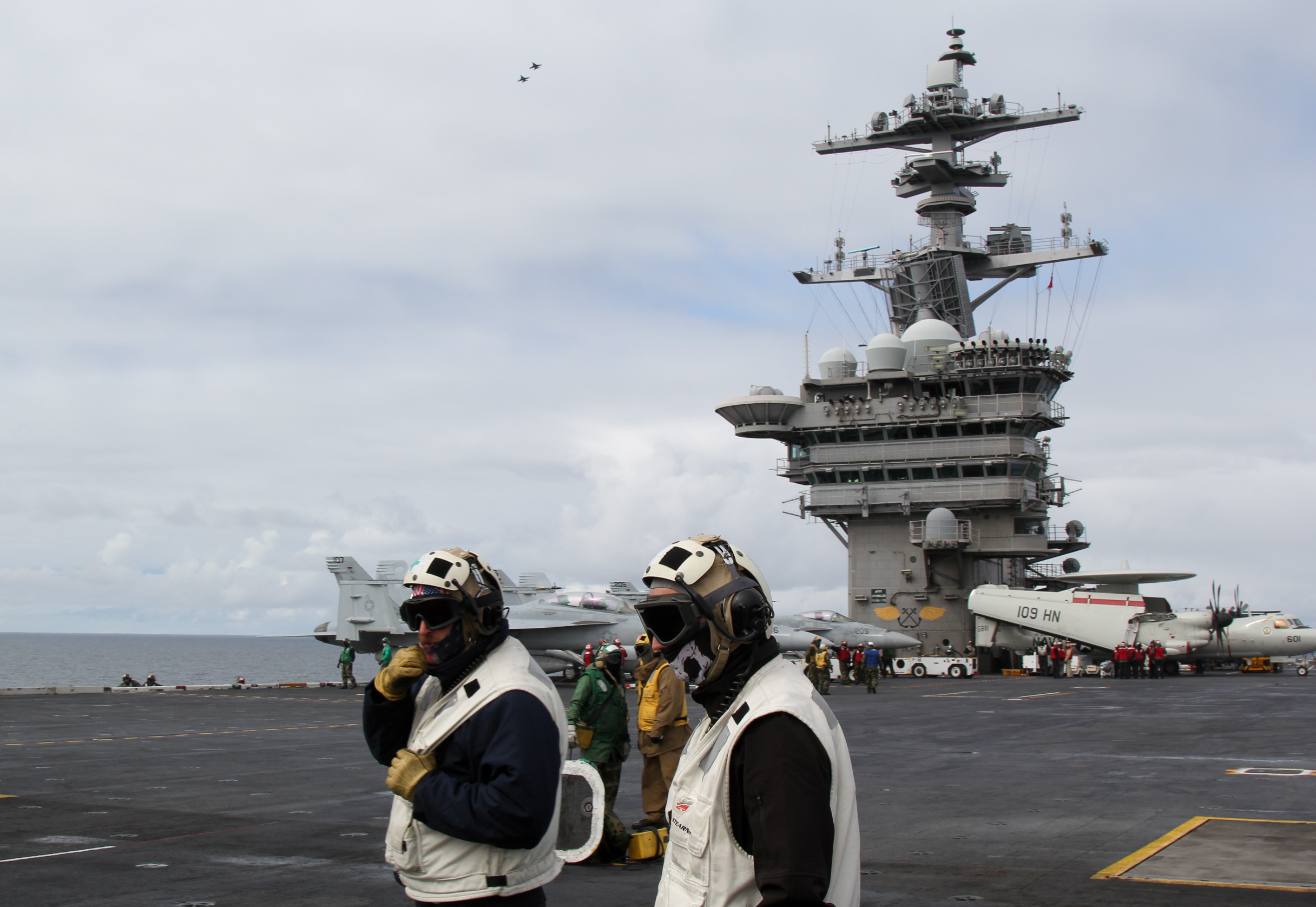
The USS Theodore Roosevelt is the first aircraft carrier to take part in Northern Edge in a decade. Around 10,000 service-members are participating in Alaska from all the branches of the military. The point is to get marines, seamen, soldiers, coasties and airmen all working toward the same mission.
“It sounds easier said than done,” said Rear Admiral Daniel Dwyer, the ship’s commander, standing on the flag deck not far from an exercise machine tucked in a corner. According to Dwyer, Northern Edge is designed to teach the different branches how to jointly partner on complex tasks.
The Navy is always on hand for the biennial exercise, but the branch is increasing its presence in Alaska, a strategic move driven in part by more activity in Arctic waters.
“When you see the shrinking of the Polar Ice Cap, opening of sea lanes, more traffic through those areas, then it’s the Navy’s responsibility to protect America through those approaches,” Dwyer said.
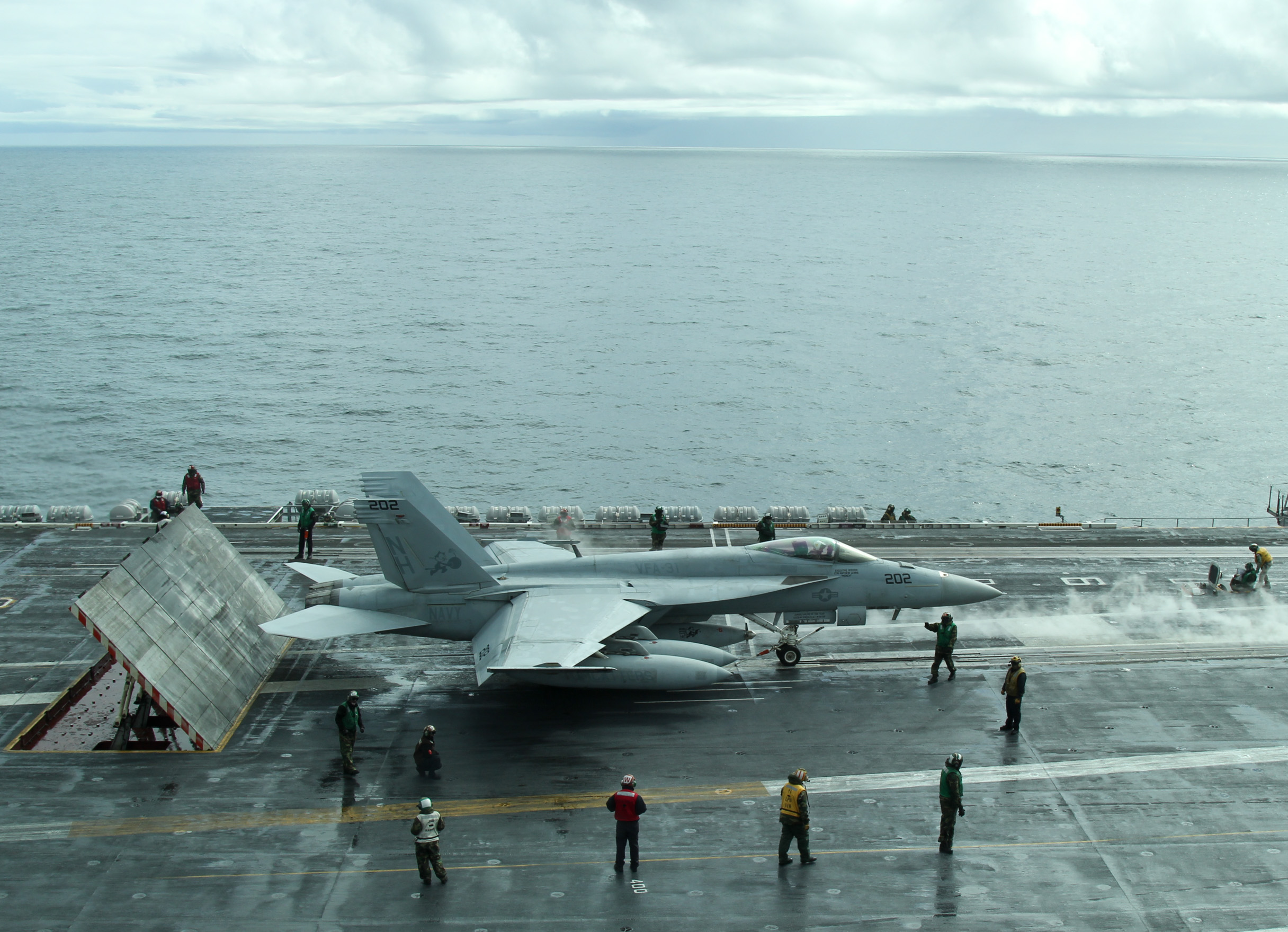
Worries for marine wildlife
Part of the military’s work facilitating Northern Edge is gathering concerns from coastal communities in Alaska, many of which worry about what the activities are doing to the environment and wildlife. On this particular day of exercises, onboard the ship are several civilians, technically called a “distinguished visitor group,” getting a special up-close tour of the happenings.
The Navy is bringing groups of local elected officials and public servants from the affected communities out to see operations first-hand.
“Mostly it’s a very unique field trip,” said Donna Aderhold, a member of the Homer City Council. She and other community residents are troubled by aspects of the exercises.
“Some of the concerns have been about the timing of the training and the potential effects on marine species, whales, fish.”
These worries are longstanding. Environmental concerns are a consistent part of Northern Edge. In 2017, Sen. Lisa Murkowski wrote a letter to Navy commanders asking the military branch to re-examine how they plan and execute the exercise. In the last few years, almost a dozen local governments in coastal communities have passed resolutions opposing or expressing reservations about the training, according to the Cordova-based Eyak Preservation Council.
“They aren’t listening to us,” said EPC Executive Director Carol Hoover, who maintains the exercises threaten the health of fish and wildlife during a key migratory season.
“We trust the traditional knowledge and the fishermen’s knowledge that this is a bad time to do these trainings,” she said.
Hoover says fishermen and community members she’s spoken with want the exercises moved to the fall.
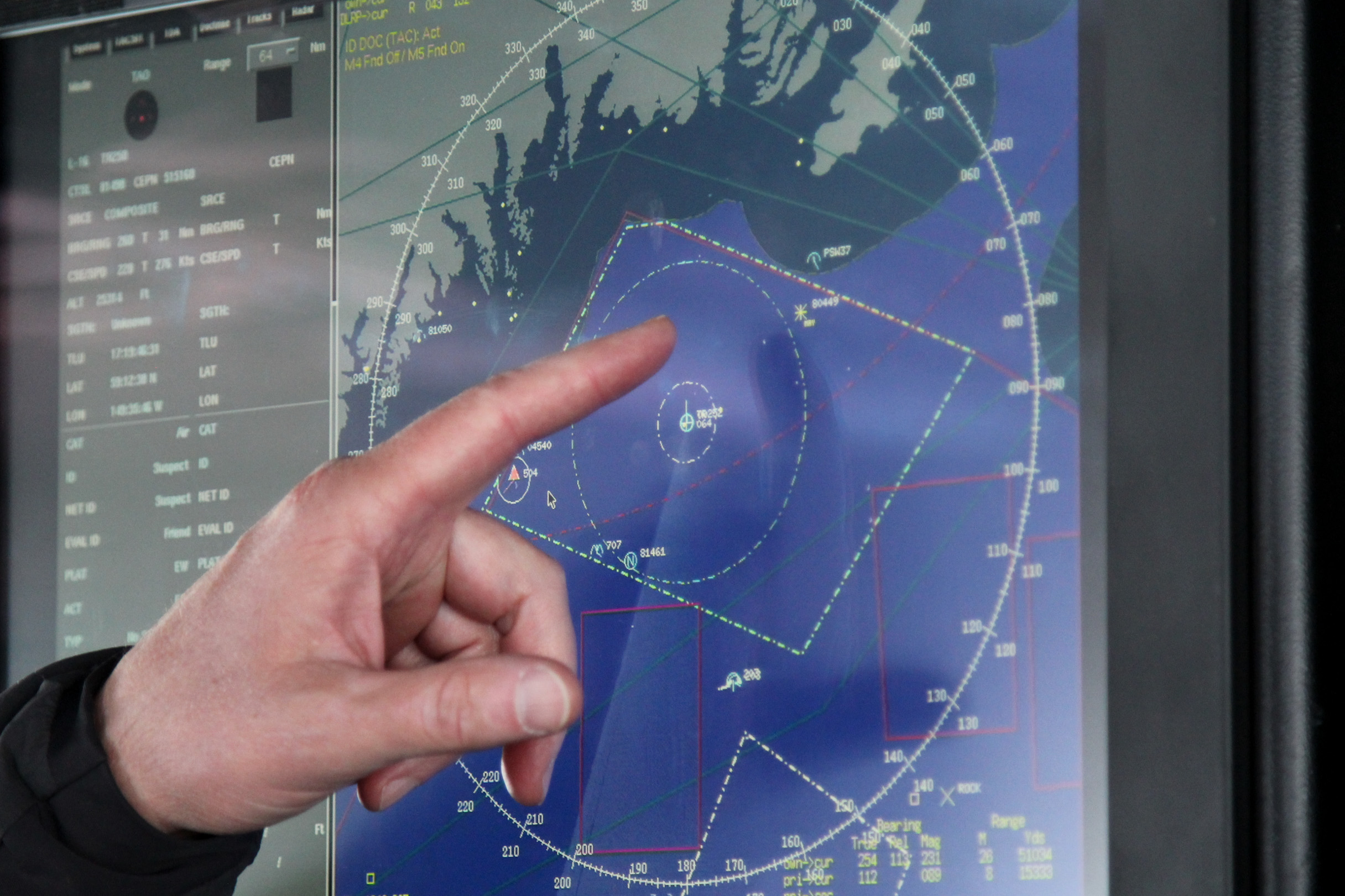
Military downplays concerns
Members of the military say the timing is based on a number of factors. One is the difficulty of coordinating so many assets and personnel years in advance. The other is safety. Abundant day-light and relatively mild weather make late spring a better time to move hundreds of vessels through the waters and sky.
“There’s certainly some misunderstandings in the public,” said John Mosher, project manager for Northern Edge’s environmental impact statement.
According to Mosher, a lot of the concerns over the exercises are unfounded, based on the military’s scientific review. The sonar used to detect submarines has no detectable impact on species of commercially harvested fish in the region. A lot of the misunderstandings he points to have to do with what the military is technically permitted to do, versus what it actually does during exercises. For example, under the EIS, though the military is technically allowed to employ live ammunition, bombs, and explosive buoys, in recent years there is no evidence they have used any of those kind of ordinance.
“They are typically far below the authorizations,” Mosher said, adding that while the military secures permission for the maximum range of activities, it generally does only a small fraction of them as part of Northern Edge.
The exercises wrap up on May 24.
Related stories from around the North:
Canada: Canada’s 2019 budget slim on hard power Arctic commitments, experts say, Radio Canada International
Finland: US, Norwegian troops join military drill in Arctic Finland, Yle News
Norway: Norway rearming in Arctic to face new security landscape, The Independent Barents Observer
Russia: Russian navy holds live-fire exercise in Norwegian Sea for second time in a month, The Independent Barents Observer
Sweden: Cross-party talks to expand military marred by political feud, Radio Sweden
United States: More assertive U.S. Arctic policy puts Ottawa and Washington on collision course, Radio Canada International


